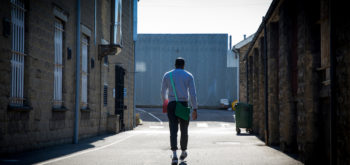What protections are there for the vulnerable accused?
Concerns for the treatment of ‘the vulnerable’ in criminal trials are now well-versed. Vulnerable complainants and other witnesses are now privy to a series of statutory ‘special measures’ to assist them to give evidence (Youth Justice and Criminal Evidence Act 1999). These special measures offer adjustments to the traditional way in which a vulnerable witness gives evidence with the aim of facilitating testimony which is more complete, coherent, and accurate.
Examples include screens (which screen the witness from the dock and the public gallery), live link (which to permits a witness to give evidence from outside of the courtroom), and intermediaries (who are specialist communication experts). Broadly speaking, vulnerable witnesses are those who are young (under 18), suffering from a mental health problem, or a learning disability which is likely to diminish the quality of evidence.
The accused was excluded from eligibility for special measures under the Youth Justice and Criminal Evidence Act 1999. As I have written about in the Criminal Law Review, the reasons for this – (i) the existence of pre-trial safeguards; (ii) the existence of other trial based safeguards, such as non-compellability and the provision of legal representation; and (iii) the perceived unsuitability of the measures for the accused – do not stand up to closer scrutiny.
Some special measures provisions are now available to accused persons who are vulnerable. This expansion stemmed from the courts on the grounds of concerns about compliance with Article 6 European Convention of Human Rights. The provision is largely governed by the common law, with the exception of a statutory live link provision for vulnerable accused (YJCEA, s.33A).
My research
The uptake and effectiveness of special measures by vulnerable witnesses was the subject of many evaluations and studies throughout the mid-2000s. However, the uptake of special measures provisions by the accused remains under-researched. Apart from some early figures about the use of intermediaries by the accused (Cooper 2011; Plotnikoff and Woolfson 2013) the use of other special measures by the accused was unknown.
My research provides the first insight into the use of live link and screens by vulnerable defendants giving evidence in their defence. I interviewed recorders, barristers and solicitors, seeking their experiences of special measures use by all vulnerable people (including the accused) in Crown Court trials. The sample size (n=13) is small, and so the findings from this study are not generalisable. The data is still of value, however, in flagging up key distinctions in this particular area, and highlighting themes which might be of relevance in other Crown Court centres.
I found that the 13 lawyers I interviewed all had multiple experiences of vulnerable prosecution witnesses using special measures to assist them to give evidence. However, where the accused was concerned, the picture was very different. Only two of the 13 recalled the accused giving evidence by live link; two recalled the accused giving evidence from behind a screen; and four recalled the accused giving evidence with the assistance of an intermediary.
This notable disparity in my respondents’ experience of uptake of special measures warranted further exploration. While there is some disparity in terms of the provision of special measures (provision to the accused remains inferior to that for other witnesses), it is sufficient to expect that more defendants would have used special measures than my respondents had experienced. This is particularly so given the prevalence of vulnerability among suspect/offender populations.
I wanted to understand why lawyers make the decisions they do – why, when faced with a vulnerable witness are special measures opted for more frequently than when faced with a vulnerable client? To do this, I used Keith Hawkins’ framework of ‘surround, field, and frames’. This is a heuristic device which allows decision-making to be set in its wider context. As well as looking directly at the way that lawyers ‘frame’ their decisions, this framework also holds relevant the socio-political context in which this takes place (the ‘surround’), and the way in which the legal system, or ‘field’ is organised.
The way in which criminal practitioners frame their decisions is an important factor. For instance, my respondents indicated that special measures were often framed as a tool for the prosecution. The purpose of screens was perceived as to screen the witness from the accused. The live link was viewed as a tool to prevent the witness ever needing to enter the courtroom. Their practical utility for the accused, therefore, was much less obvious – from whom would you need to screen the accused? Why would the accused leave the courtroom, where they have been sitting for days/weeks/months, to give their evidence?
Perhaps more significant was the socio-political surround and the way in which the legal field was organised. The public concern and governmental support for improving the treatment of ‘victims and witnesses’, which lead to the introduction of the statutory special measures scheme, placed this legislative scheme in the limelight. The evaluation studies of the 2000s thus scrutinised this area of practice. As a result, the legal field was organised in a way which encouraged and supported criminal practitioners in making applications for special measures. MG forms used by the police and CPS prompt officers to consider vulnerability and available support from the moment a witness gave their statement. Agencies such as Victim Support and The Witness Service, among other things, further support this process. This all serves to limit the discretion that a prosecution advocate has over whether to apply for special measures, and if so, for which ones.
For the defence, however, the same level of scrutiny was not (and is not) apparent. The political climate was and remains ‘anti-defence’. The concern for victims was coupled with a frustration with the system’s ability to convict the accused. The provision of special measures for the accused has been court-led, and not accompanied by the reams of guidance and best practice support to which the statutory scheme was. There are no pre-court bureaucratic processes with which the defence should comply. The implementation of defendant special measures has not been the subject of government evaluations. The net effect of this is that defence lawyers are left with untrammelled discretion over how to proceed. This means that they can avoid special measures should they so wish. It also means that if they are not aware of the benefits of special measures, or indeed of their very existence for the accused, they will not be sought.
What does all of this mean?
Ultimately, it means that even if there was an identical statutory scheme for special measures for the accused, their uptake is unlikely to be comparable to that for prosecution witnesses. Instead, this legal change would need to be accompanied by changes to the organisation of the legal field. For instance, specific training for the defence and judiciary on the potential benefits of special measures for the accused. This would enable them to make informed decisions about their utility for a vulnerable defendant. Another change could be the advent of forms comparable to the MG forms utilised by the police and CPS, to prompt vulnerability and special measures discussions early in the process. This would serve to place a greater level of expectation on defence advocates to apply for special measures when needed to help a vulnerable defendant to effectively participate as a witness.
The full publication of this research will appear in the September 2018 edition of the Journal of Law and Society, titled: ‘Using Hawkins’ Surround, Field and Frame Concepts to Understand the Complexities of Special Measures Decision-making’.
First published June 28, 2018






